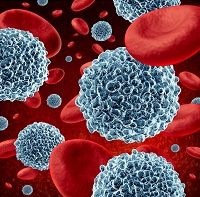Article
New Formulation Compares Favorably to Current, Commonly Used Tenofovir Dose
Author(s):
Tenofovir alafenamide, which results in 90% lower circulating plasma tenofovir than standard tenofovir disoproxil fumarate, is associated with similar virologic response rates as the standard regimen, but with an improved safety profile.

High virologic responses rates were seen in patients in a two-study comparison of 2 single-tablet tenofovir regimens — comparing an original and newer formulation -- in initial HIV-1 therapy, according to results released this week at the annual Conference on Retroviruses and Opportunistic Infections in Seattle, WA.
The original formulation, tenofovir disoproxil fumarate (TDF) has been included in most recommended antiretroviral regimens. TDF is potent and well tolerated but in some patients it has been associated with clinically significant renal and bone toxicity, noted David Wohl, MD, of the University of North Carolina, Chapel Hill, who presented the abstract and discussed the findings of the two parallel studies.
The two phase III studies involved treatment-naïve patients and compared TDF 300 mg to the investigational tenofovir alafenamide (TAF) 25 mg. The latter is a newer formulation that has 90% lower circulating plasma tenofovir than does the widely used TDF and also maintains high antiviral activity, Wohl said.
A previous phase 2 efficacy study from last year of elvitegravir, cobicistat, emitricitabine, and TAF found it was not only comparable to elvitegravir, cobicistat, emitricitabine, and TDF but also demonstrated significant improvement in bone and renal safety, Wohl said.
“We sought to confirm the efficacy results from the phase 2 study of ECF TAF in two fully powered clinical trials,” he said.
Between the two studies, 866 patients were randomized to one study to receive a single-tablet TDF elvitegravir, cobicistat, emitricitabine formulation and 867 patients were randomized to the other study to receive a single-tablet TAF elvitegravir, cobicistat, emitricitabine formulation. For both studies, the primary endpoint was the proportion of patients with a viral load of less than 50 using the Week 48 FDA snapshot analysis with a 12% margin for noninferiority.
“The baseline characteristics between the TAF arm and TDF arm were very well balanced,” Wohl said.
Study results indicated that 92% of patients in the TAF study and 90% of those randomized to the TDF study had a viral load of less than 50 at week 48, according to Wohl. High virologic response rates were seen in both studies and both met the primary endpoint.
The newer TAF formulation achieved noninferiority when compared to the original TDF formulation. In evaluating efficacy across subgroups such as age, sex, and race, the TAF formulation did at least as well as TDF.
Overall safety profiles also were well balanced between the two studies, with adverse events that were treatment-related and led to discontinuation from the study occurring in less than 1% in the TAF group and less than 1.5% in the TDF group. Five people in the study died, 2 from the TAF group and 3 from the TDF group, but study investigators did not consider any of the deaths to be related to either drug regimen.
Both drugs were considered to be well tolerated and safe in these regimens.
Wohl noted that complete results from both studies have been submitted for peer review publication. Health authority filings have also been submitted and are under review in multiple nations, he said.
Gilead sponsored the identical studies.




